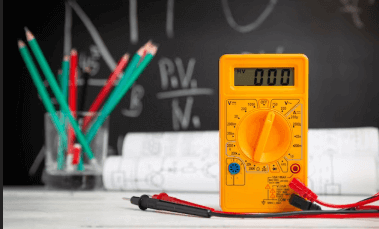Question
a.
algebraic sum of the resolved parts of the forces in the direction
b.
arithmetical sum of the resolved parts of the forces in the direction
c.
difference of the forces multiplied by cosine θ°
d.
sum of the forces multiplied by the sine θ
Posted under Civil Engineering
Interact with the Community - Share Your Thoughts
Uncertain About the Answer? Seek Clarification Here.
Understand the Explanation? Include it Here.
Q. The resolved part of the resultant of two forces inclined at an angle θ in a given direction is
Similar Questions
Explore Relevant Multiple Choice Questions (MCQs)
Q. The following statement is one of the laws of Dynamic friction
View solution
Q. A 50 kg boy climbs up a 8 m rope in gymnasiam in 10 sec. The average power developed by the boy is approximately
View solution
Q. According to Law of Triangle of Forces
View solution
Q. A Second's pendulum gains 2 minutes a day. To make it to keep correct time its length
View solution
Q. The following is not a law of static friction :
View solution
Q. The velocity of a moving body, is
View solution
Q. The resultant of the forces acting on a body will be zero if the body
View solution
Q. A ball moving with a velocity of 5 m/sec impinges a fixed plane at an angle of 45° and its direction after impact is equally inclined to the line of impact. If the coefficient of restitution is 0.5, the velocity of the ball after impact will be
View solution
Q. A pilot flies a small plane in a vertical loop of radius r. At the top of its trajectory he experiences weightlessness. If the acceleration due to gravity is g, the speed of the plane at the top of its trajectory would be
View solution
Q. A Seconds pendulum executes
View solution
Q. The following factor affects the orbit of a satellite up to an altitude of 720 km from the earth's surface
View solution
Q. Newton's law of Collision of elastic bodies states that when two moving bodies collide each other, their velocity of separation
View solution
Q. Two forces of 6 Newtons and 8 Newtons which are acting at right angles to each other, will have a resultant of
View solution
Q. A projectile is fired with a velocity of 100.3 m/sec. at an elevation of 60°. The velocity attained by the projectile when it is moving at a height of 100 m, is
View solution
Q. For maximum range of a projectile, the angle of projection should be
View solution
Q. A particle moves with a velocity of 2 m/sec in a straight line with a negative acceleration of 0.1 m/sec². Time required to traverse a distance of 1.5 m, is
View solution
Q. A load of 500 kg was lifted through a distance of 13 cm. by an effort of 25 kg which moved through a distance of 650 cm. The velocity ratio of the lifting machine is
View solution
Q. The angle of friction is :
View solution
Q. The resultant of two forces acting at right angles is 5 kgf and if they act at an angle of 60°, it is √37 kgf. The magnitudes of the forces are :
View solution
Q. The motion of a particle is described by the relation x = t²- 10t + 30, where x is in metres and t in seconds. The total distance travelled by the particle from t = 0 to t = 10 seconds would be
View solution
Recommended Subjects
Are you eager to expand your knowledge beyond Civil Engineering? We've handpicked a range of related categories that you might find intriguing.
Click on the categories below to discover a wealth of MCQs and enrich your understanding of various subjects. Happy exploring!








